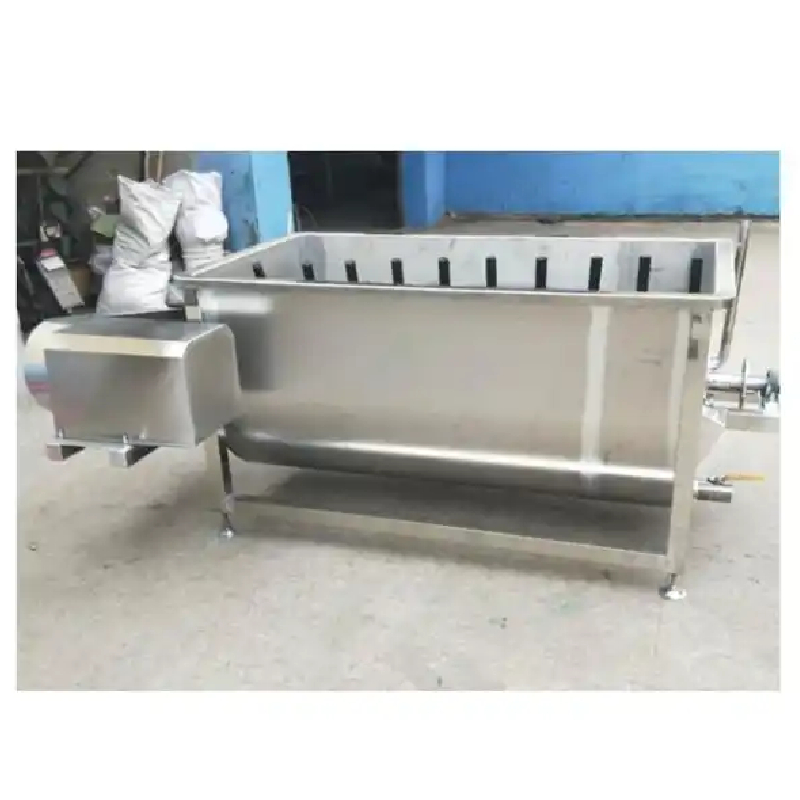Efficient Vacuum Skin Packaging Solutions for Fresh Food Preservation and Presentation
Dec . 13, 2024 08:57 Back to list
Efficient Vacuum Skin Packaging Solutions for Fresh Food Preservation and Presentation
Understanding Vacuum Skin Packaging Machines A Comprehensive Guide
In the world of food preservation and packaging, vacuum skin packaging machines (VSPMs) have emerged as a crucial technology that enhances product shelf life, maintains food quality, and reduces waste. As the demand for fresh and minimally processed foods continues to rise, understanding the workings and benefits of vacuum skin packaging becomes essential for both manufacturers and consumers.
What is Vacuum Skin Packaging?
Vacuum skin packaging is a method where food products are tightly sealed within a plastic film that has been vacuumed to remove air. Unlike traditional vacuum packaging, which might use rigid containers or bags, the skin packaging method applies a flexible film directly to the contour of the product. This creates a second skin around the food, which minimizes air exposure and extends the shelf life.
How Does a Vacuum Skin Packaging Machine Work?
A vacuum skin packaging machine employs several key processes to ensure effective packaging
1. Product Placement The food item, whether it’s meat, cheese, or seafood, is placed on a tray. This tray is typically made of materials that can withstand heat and pressure. 2. Film Application A special film, often made of nylon or polyethylene, is positioned over the product. This film is designed to be flexible yet durable, allowing for a tight seal.
3. Vacuum Creation The machine then removes the air from the chamber containing the product and the film. This vacuum environment is crucial for the adhesion of the film to the food surface.
4. Sealing Once the air is removed, the machine heats and seals the edges of the film to create an airtight environment. This step is critical in preventing contamination and degradation of the product.
5. Cooling After sealing, the package is often cooled to ensure the integrity of the seal and maintain the quality of the food inside.
Benefits of Vacuum Skin Packaging
1. Extended Shelf Life By removing oxygen, the growth of aerobic bacteria and molds is significantly slowed, resulting in longer shelf life without the need for preservatives.
2. Product Visibility Since the film hugs the product tightly, consumers can see the actual product without having to remove it from the packaging. This enhances the eye appeal and can lead to increased sales.
vacuum skin packaging machine

3. Reduced Freezer Burn The tight seal prevents moisture loss and freezer burn, maintaining the quality of the food even when stored in freezing conditions.
5. Versatility Vacuum skin packaging machines can be used for a variety of products, including meats, poultry, seafood, cheeses, and even some bakery items.
Applications in the Food Industry
The versatility of vacuum skin packaging machines makes them a favored choice in various sectors of the food industry. They are widely used by meat processors, seafood suppliers, and cheese manufacturers due to their effectiveness in preserving product freshness and appearance. In addition, they are increasingly being adopted in retail settings, where pre-packaged ready-to-eat meals are gaining popularity.
Considerations When Choosing a Vacuum Skin Packaging Machine
When selecting a vacuum skin packaging machine, several factors should be considered
- Production Capacity Assess the volume of products you need to package. Machines come in various sizes and speeds to accommodate different production levels.
- Film Compatibility Ensure that the machine is compatible with the type of films you plan to use, as different products mayrequire specific film properties.
- Ease of Use Look for machines that have user-friendly controls and straightforward maintenance processes to minimize downtime.
- Cost and ROI Consider both the initial investment and the potential return on investment. Quality machines can save costs in waste reduction and extended shelf life.
Conclusion
Vacuum skin packaging machines are revolutionizing the way food is packaged and preserved. By understanding their functioning and benefits, food manufacturers can make informed decisions that not only enhance product quality but also contribute to sustainable practices. As technology continues to evolve, these machines will play an essential role in meeting the demands of consumers who seek fresh, safe, and visually appealing products.
-
Hot Sale 24 & 18 Door Rabbit Cages - Premium Breeding Solutions
NewsJul.25,2025
-
Automatic Feeding Line System Pan Feeder Nipple Drinker - Anping County Yize Metal Products Co., Ltd.
NewsJul.21,2025
-
Automatic Feeding Line System Pan Feeder Nipple Drinker - Anping County Yize Metal Products Co., Ltd.
NewsJul.21,2025
-
Automatic Feeding Line System - Anping Yize | Precision & Nipple
NewsJul.21,2025
-
Automatic Feeding Line System - Anping Yize | Precision & Nipple
NewsJul.21,2025
-
Automatic Feeding Line System-Anping County Yize Metal Products Co., Ltd.|Efficient Feed Distribution&Customized Animal Farming Solutions
NewsJul.21,2025






